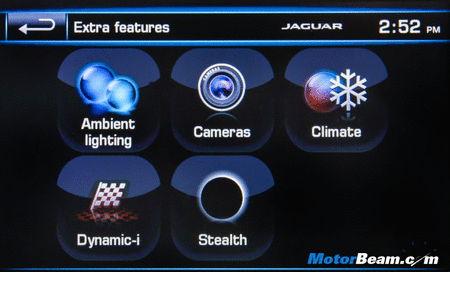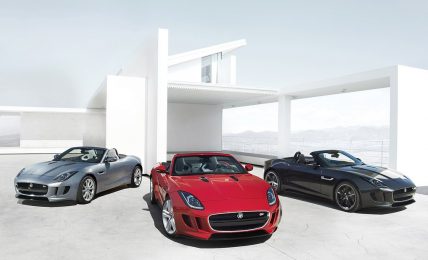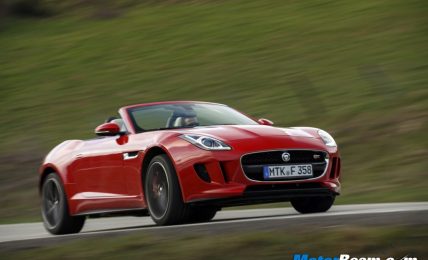[flickr size=”center” float=”medium”]http://www.flickr.com/photos/motorbeam/8725890039/[/flickr]
Driving Dynamics – The Jaguar F-Type uses an alminium body structure which helps in weight reduction. The vehicle has a 50:50 weight distribution on the V6 models and 51:49 on the V8 model (battery and washer fluid reservoir have been placed in the boot). The rear wing deploys at speeds in excess of 96 km/hr and reduces lift by 120 kgs. The company claims the F-Type is 30% stiffer with a 10% quicker steering than any other Jaguar which yields it excellent dynamic ability. It also has short overhangs and aluminium suspension which helps in reducing centre of gravity and keeps unsprung weight at bay. We drove the V6 S through the 15-turn, 3.93 kms Navarra Circuit and were pleased by the sharp handling and well weighed hydraulic steering. The steering wheel has an instant over center response and is quick with turn-ins, giving tremendous feedback and urges you to push harder. The balance through sharp turns is impressive and the F-Type simply jinks into corners and remains tremendously composed. The limited slip differential (on the V6 S) and electronic active differential (V8 S) are integrated to the Dynamic Stability Control (DSC), working underground to keep things clean and fuss free. The dampers further stiffen the body on turns to keep those wide Pirellis glued to the tarmac, no hint of understeer whatsoever.
[flickr size=”center” float=”medium”]http://www.flickr.com/photos/motorbeam/8727010030/[/flickr]
Even though the F-Type is the stiffest Jaguar till date, it has an excellent ride quality, which has very little harshness to it. The ride quality on the V8 S model was noticeably stiffer, with bigger rims underpinning it. With the Dynamic Mode enabled (dials turn red), the F-Type is so much more eager, with increased steering weight, stiffened suspension, quicker gear shifts (no automatic upshifts in manual mode) and reduced electronic intervention. Blasting through the track and countryside roads of Spain, the F-Type remained very accurate through corners and well planted at high speeds. The V8 feels slightly heavier and not as nimble as the V6 S. The F-Type weighs around 150 kgs more than the Porsche 911 Carrera Cabriolet and Jaguar engineers say the F is 3-4% heavier but 6% bigger than the German. The 911 is faster and more engaging to drive but Porsche has been making the same car for 50-years now and for Jaguar to come even close is itself an achievement.
The Jaguar F-Type picks a thing of two from the Nissan GT-R. The infotatinment system shows throttle and brake inputs along with G-forces generated. The Configurable Dynamics options lets you sharpen the steering weight and throttle response while at the same time keeping the ride quality unchanged on models with Adaptive Dynamics. It also has a stop watch, so you can record your lap times. The brakes on the F-Type offer excellent stopping power and in spite of heavy braking on the circuit, there was no brake fade. Pedal bite is extremely surefooted with good depth of modulation on offer.
The Jaguar F-Type has a superbly calibrated steering wheel and excellent poise through sharp bends, it feels alive and devours corners with relatively high precision.
Head over to the next page to read our verdict on the Jaguar F-Type.




